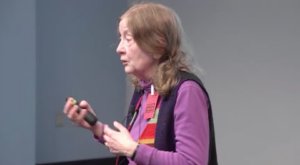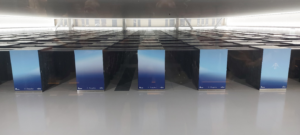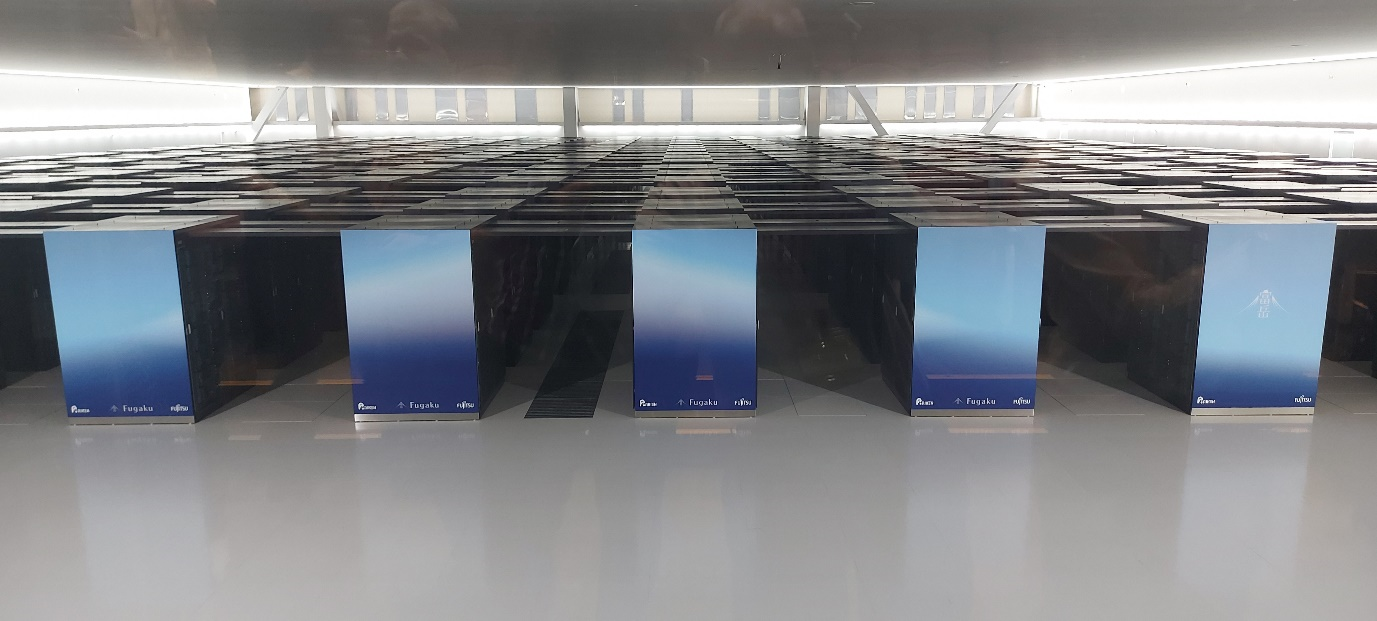By Amos Lawless
The week of 21-25 October saw this year’s edition of the International Symposium on Data Assimilation, or ISDA. This is an annual conference that brings together experts on data assimilation for environmental prediction, with scientists from universities, research institutes and operational centres present. The symposium moves around between Europe, Asia and the Americas, and this year it was the turn of Asia, with the conference being held at the RIKEN Center for Computational Science in Kobe, Japan.
The DARC group was represented by me and our recently-appointed lecturer Eviatar Bach. So after a long journey of over 24 hours I found myself in Japan for the first time, ready to hear about the latest developments in data assimilation research.
Eugenia Kalnay
The conference this year was especially marked by the sad news of the passing of Eugenia Kalnay in August, a true giant in the field of data assimilation (see Fig. 1). As soon as the news was received, the scientific organising committee (of which I was a part) began discussing how to mark her memory. We fixed upon a dedicated memorial session on the first day, in which 8 of her previous PhD students (including Eviatar) spoke about their work with Eugenia and their relationship with her. It was really beautiful to hear about not only the immense variety of her work, but what she was really like as a person. This session revealed who she was as a dedicated mentor, passionate about her work and her students. It was certainly a very fitting memory.

Scientific sessions
The other scientific sessions were a mixture of keynote speakers, contributed talks and poster sessions, covering many topics in data assimilation, from theoretical advances to operational plans. Not surprisingly machine learning played a large part in the conference.
Pierre Tandeo from IMT Atlantique and RIKEN gave an excellent keynote address surveying the different ways machine learning is being applied to data assimilation. This was followed by a series of contributed talks on the topic, including Eviatar talking about his work on learning optimal filters using variational inference. In a different session I presented our recently-published work on understanding coupled atmosphere-ocean cross-covariances in the Met Office forecasting system [1].
Other highlights of the conference included several presentations on methods for removing noise in sample covariances (known as localization) and presentations on non-Gaussian assimilation methods. In all of the sessions, lively questions and discussion helped to deepen the understanding of new advances.
Perhaps the most unusual topic was that of using data assimilation to control the weather, especially to weaken hurricanes or change their path. This was the topic of two keynotes and forms part of the Japanese Moonshot programme, led by local conference organiser Takamasa Miyoshi, which aims to achieve such control by 2050.
Computing facilities
RIKEN is home to one of the largest civil computing facilities in the world, with their Fugaku supercomputer, which has 432 computing racks storing just under 160,000 CPUs. All conference participants were given an opportunity for a tour of this facility, which helped us see how physically big it really is (see Fig. 2).

This computer has been used for huge data assimilation experiments by the group at RIKEN, allowing them to run ensemble data assimilation experiments at a scale that is not possible elsewhere. During the Tokyo Olympics and Paralympics they implemented a convective-scale data assimilation and forecasting system that produced a new 30-minute forecast every 30 seconds [2].
Outside the scientific programme, the ice-breaker event and the conference banquet gave further opportunities to catch up with old colleagues and get to know new ones. I come home from the workshop once again enthused by the science of data assimilation and with several new ideas to try. For those working in data assimilation, ISDA is really an excellent place in which to exchange ideas. And for those who cannot wait for the next in-person conference, the regular ISDA-online seminars will start again from January (see https://isda-online.univie.ac.at/).
References
[1] Wright, A., Lawless, A.S., Nichols, N.K., Lea, D. and Martin, M. (2024), Assessment of short-range forecast error atmosphere-ocean cross-correlations from the Met Office coupled NWP system. Quart. J. Royal Met. Soc, 150, 2783 – 2797. doi.org/10.1002/qj.4735.
[2] Miyoshi, T., Amemiya, A., Otsuka, S., Maejima, Y., Taylor, J., Honda, T., … & Uno, A. (2023). Big Data Assimilation: Real-Time 30-Second-Refresh Heavy Rain Forecast Using Fugaku During Tokyo Olympics and Paralympics. In Proceedings of the International Conference for High Performance Computing, Networking, Storage and Analysis, pp. 1-10. https://dl.acm.org/doi/pdf/10.1145/3581784.3627047.

